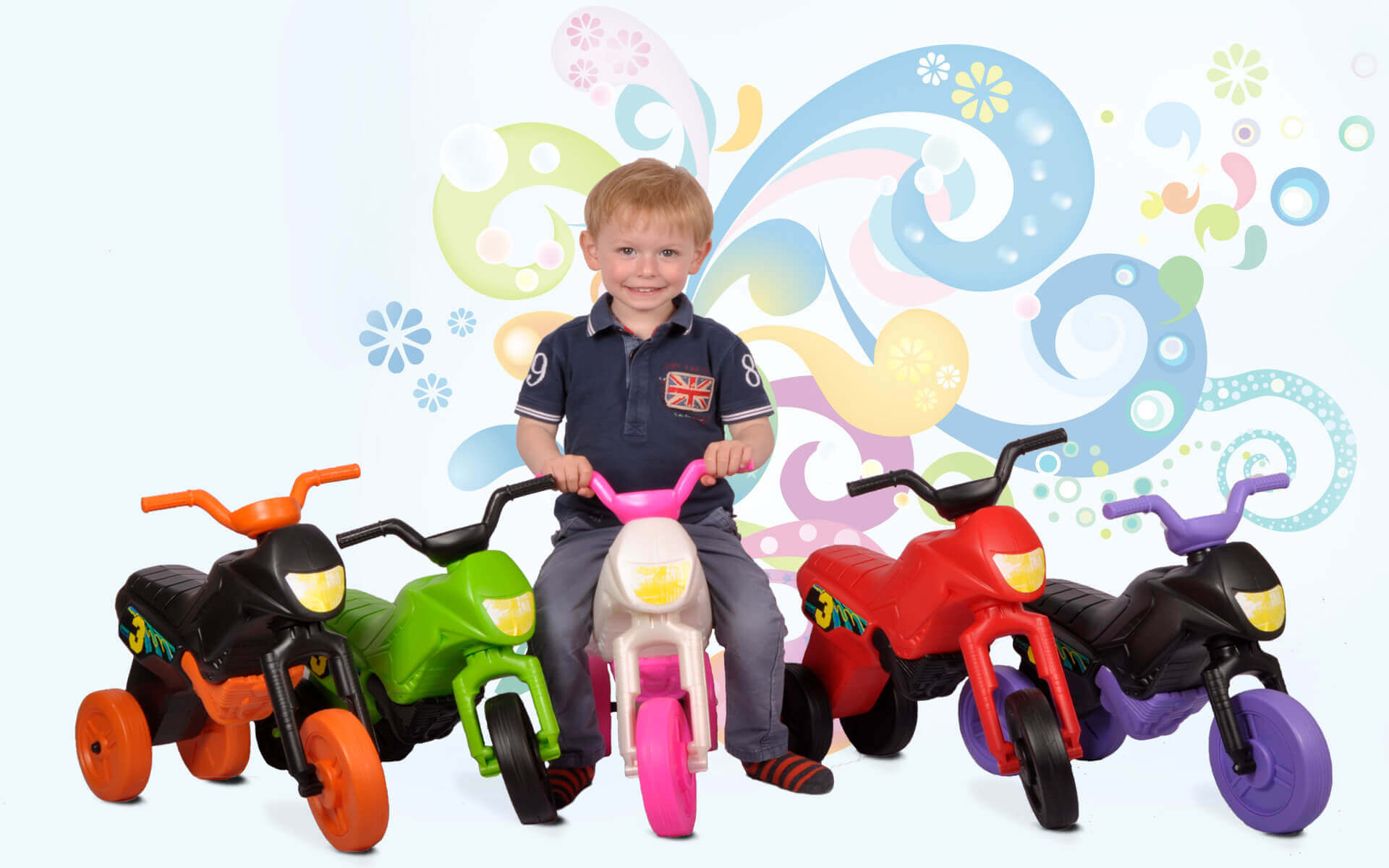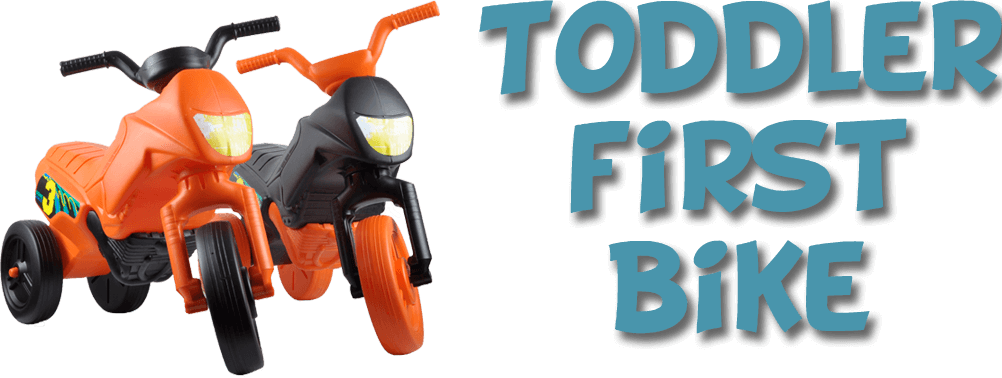1. Improve Mobility
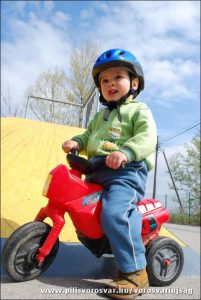 It’s essential for toddlers and young children to be able to balance as they learn to walk and run. Ride-on toys build these gross motor skills by encouraging the use of large muscle groups. When kids climb on and off of ride-on toys, they need to balance themselves to avoid falling. Once on the toy, they begin to engage their leg muscles to push themselves along or move the pedals. Rocking toys require leg and core muscles to move back and forth. Fine motor skills also come into play with ride-ons. Manipulating steering wheels or handlebars requires children to use smaller muscles and teaches coordination between the hands, arms, legs, and feet. Embellishments such as pretend radio knobs, horns, or bells all require little hands to be able to grasp, push, and turn to make them work. The more kids engage with these types of toys, the easier it becomes for them to move their bodies in complex ways.
It’s essential for toddlers and young children to be able to balance as they learn to walk and run. Ride-on toys build these gross motor skills by encouraging the use of large muscle groups. When kids climb on and off of ride-on toys, they need to balance themselves to avoid falling. Once on the toy, they begin to engage their leg muscles to push themselves along or move the pedals. Rocking toys require leg and core muscles to move back and forth. Fine motor skills also come into play with ride-ons. Manipulating steering wheels or handlebars requires children to use smaller muscles and teaches coordination between the hands, arms, legs, and feet. Embellishments such as pretend radio knobs, horns, or bells all require little hands to be able to grasp, push, and turn to make them work. The more kids engage with these types of toys, the easier it becomes for them to move their bodies in complex ways.
2. Encourage Exercise
Most adults look at exercise as something difficult and unpleasant. Projecting this attitude to kids sets a poor example and suggests that exercise can’t be fun. Starting kids out early with ride-on toys creates a much more positive image of exercise. In fact, when kids are zooming back and forth on their favorite ride-ons, they won’t even realize that they’re exercising. Ride-ons are an easy way to encourage kids to move around, and it’s not hard to get a child of any age to spend time on a ride-on toy. As long as he or she enjoys the type of toy and can move it easily, chances are a child will be happy to ride until he or she is tired.
3. Inspire Independent Play
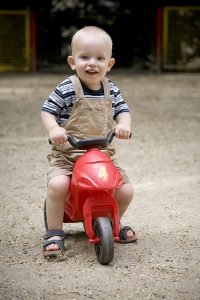 Though kids should always be supervised when using ride-on toys, the type of play that these toys encourage is largely independent. Kids learn to move under their own power, making it possible to get from one place to another in a way that’s more complex and yet easier than walking. Riding around the house, the yard, or the neighbourhood gives kids a chance to take in their surroundings on their own. This not only helps them learn to form opinions and draw conclusions about the world, but it also sets the stage for the type of independent thinking that they’ll need in order to succeed in school and in the workforce.
Though kids should always be supervised when using ride-on toys, the type of play that these toys encourage is largely independent. Kids learn to move under their own power, making it possible to get from one place to another in a way that’s more complex and yet easier than walking. Riding around the house, the yard, or the neighbourhood gives kids a chance to take in their surroundings on their own. This not only helps them learn to form opinions and draw conclusions about the world, but it also sets the stage for the type of independent thinking that they’ll need in order to succeed in school and in the workforce.
4. Build Confidence
As kids learn to coordinate the different movements necessary to power ride-on toys, they gain confidence in their own abilities. Moving up from toys that they push with their feet to one with pedals, changing from tricycles to bicycles, or graduating to bikes without training wheels are all milestones in which kids can take pride. The more comfortable they become with ride-on toys, the more challenges they’ll be able to face. This confidence translates to other areas of life, helping kids to deal with difficulties that arise as they learn and grow.
5. Put Kids Outdoors
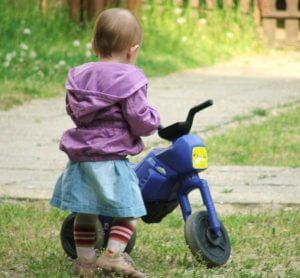 Television, computers, video games, and tablet devices are increasingly replacing outdoor play for kids. However, getting up off the couch and out into the fresh air is an essential part of childhood. Kids who spend time outdoors tend to be healthier and are more likely to choose outdoor activities as they grow older. Since most ride-on toys can be used in the backyard, on the sidewalk, or at a local park, they encourage kids to leave electronics behind for productive outdoor play. Being outside gives kids positive stimulation from natural surroundings that they won’t get from hours spent sitting in front of a screen.
Television, computers, video games, and tablet devices are increasingly replacing outdoor play for kids. However, getting up off the couch and out into the fresh air is an essential part of childhood. Kids who spend time outdoors tend to be healthier and are more likely to choose outdoor activities as they grow older. Since most ride-on toys can be used in the backyard, on the sidewalk, or at a local park, they encourage kids to leave electronics behind for productive outdoor play. Being outside gives kids positive stimulation from natural surroundings that they won’t get from hours spent sitting in front of a screen.
6. Spark Creativity
Ride-on toys come in many different models. With bright colors and kid-friendly styles, it’s easy to see how these toys get kids’ imaginations going. They can pretend that a rocking horse is a real horse, opening the door for games about farms or cowboys. Foot- or battery-powered cars in kid sizes become race cars, zooming down the track toward the finish line. Kids also like to imagine that they’re grown-ups, and ride-on toys give them the opportunity to pretend that they’re going on trips or doing simple errands such as driving to the store. Inventing games and engaging in pretend play builds important creative thinking skills that can be used for problem-solving throughout childhood and into adult life.
7. Teach Cooperation
Playing in groups is another important part of childhood development. When kids play together, they learn to share, make compromises, and work together. Ride-on toys provide opportunities for all of these as kids get together and begin inventing games to play. Young children may bring their sleds or rocking horses and pretend they’re on a journey, meaning that they’ll all have to work together to get to the imagined destination. Older kids on tricycles or bicycles have to agree on where they want to ride. Kids of different ages and skill levels learn to be patient as they ride with others who may not be as fast or as coordinated as they are. Being taught cooperation at a young age helps kids continue to interact positively with others as they get older.
8. Offer Staying Power
Too many toys on the market today are only fun to kids for a short time. Whether created as part of a pop culture franchise or made to cater to a passing trend, these toys wind up sitting in closets more often than not, with kids having lost interest soon after getting them. Ride-on toys, on the other hand, have a lot of staying power. Kids treasure toys that offer lasting enjoyment and tend to hold on to them for much longer than so-called trendy toys. Some ride-on toys have adjustable seats or other parts that can be moved to allow a toy to grow with a child, providing years of enjoyment.
